Table of Contents
- Exploring the Origins of the Gaia Hypothesis and Its Historical Context
- Understanding the Scientific Foundations Behind the Gaia Hypothesis
- The Role of James Lovelock and the Formation of the Gaia Concept
- Impact of the Gaia Hypothesis on Environmental Science and Policy
- Recommendations for Further Research and Application of Gaia Principles
- Q&A
- In Retrospect

Exploring the Origins of the Gaia Hypothesis and Its Historical Context
The Gaia Hypothesis, which posits that Earth functions as a self-regulating system, emerged from the confluence of various scientific and philosophical currents in the 20th century. Initially conceived by James Lovelock in the 1970s, this revolutionary idea was influenced by earlier ecological theories that emphasized the interdependence of life and the environment. Lovelock’s collaboration with microbiologist Lynn Margulis further enriched this hypothesis, suggesting that Earth’s biosphere is intrinsically linked to its physical and chemical properties. Their joint efforts laid the groundwork for a paradigm shift in how we perceive the relationship between living organisms and their planetary habitat.
The historical context surrounding the development of the Gaia Hypothesis was marked by significant ecological concern and burgeoning environmental movements. The early 1970s saw growing awareness of human impact on the environment, epitomized by events such as the first Earth Day and the publication of “Silent Spring” by Rachel Carson. This atmosphere of ecological urgency fueled interest in theories that challenged reductionist views of biology and instead embraced a holistic approach. The Gaia Hypothesis emerged not just as a scientific assertion but also as a philosophical statement underscoring humanity’s responsibility toward the planet.
Over the decades, the Gaia Hypothesis has sparked debate and research across multiple disciplines, from climatology to philosophy. Despite encountering skepticism from some within the scientific community, its influence is evident in fields such as Earth system science and sustainable development. The hypothesis has prompted further exploration into how organisms interact with their environment, leading to advancements in understanding complex ecological dynamics. The ongoing discourse reflects a broader quest for a more integrated view of Earth’s systems, highlighting the necessity of collaboration in addressing the pressing environmental challenges of our time.
Understanding the Scientific Foundations Behind the Gaia Hypothesis
The Gaia Hypothesis, proposed by James Lovelock in the 1970s, presents a compelling perspective on the intricate relationship between living organisms and their environment. This hypothesis suggests that the Earth operates as a self-regulating entity, where biological processes contribute to maintaining conditions conducive to life. Central to this thesis is the interaction among various ecosystems, the atmosphere, and geological processes, creating an intricate web of feedback loops that stabilize the planet’s climate and chemical composition.
At the heart of this theory lies the interdependence of living organisms and their surroundings. Here are key components that illustrate this interconnectedness:
- Biogeochemical Cycles: The cycling of nutrients and elements, such as carbon and nitrogen, demonstrates how life forms influence these processes, thereby promoting stability.
- Climate Regulation: Life plays a vital role in regulating climate through activities like photosynthesis and respiration, which help balance greenhouse gases.
- Biodiversity Impact: Diverse ecosystems are better at responding to environmental changes, showing resilience and contributing to the planet’s overall health.
The scientific foundations supporting the Gaia Hypothesis also draw from various disciplines, including ecology, climatology, and biology. A synthesis of findings from these fields highlights how life not only adapts to the environment but actively shapes it. Consider the following table summarizing some scientific principles underpinning the hypothesis:
| Scientific Principle | Description |
|---|---|
| Homeostasis | The ability of biological systems to self-regulate parameters like temperature and pH. |
| Resilience | Systems that recover quickly from disturbances, maintaining ecosystem functionality. |
| Feedback Loops | Processes that can either amplify or dampen changes within the environment, influencing stability. |
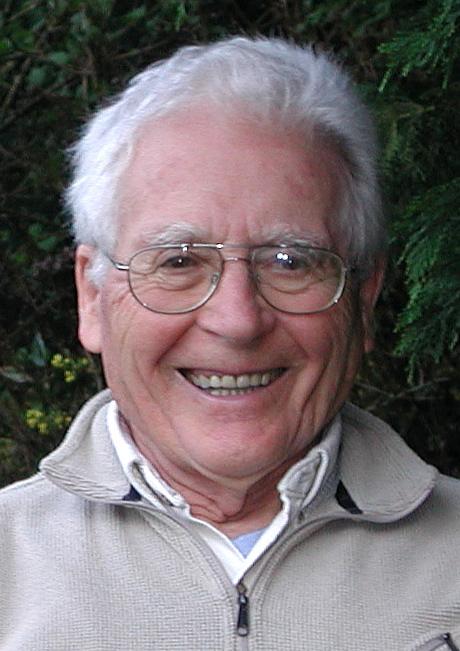
The Role of James Lovelock and the Formation of the Gaia Concept
James Lovelock, a British scientist and environmentalist, made significant contributions to our understanding of Earth’s systems through his groundbreaking work on the Gaia concept. His innovative approach postulated that the Earth functions as a self-regulating entity. This view emerged during the 1960s and 1970s when Lovelock was influenced by his observations of how living organisms interact with their environment. His hypothesis suggested that biological and physical components of the Earth are interconnected, promoting a balance that supports life. Lovelock’s ideas challenged conventional scientific views, inviting both interest and skepticism in academic circles.
The Gaia hypothesis articulates the idea that the planet’s biological processes contribute to the stability of the Earth’s environmental conditions. According to Lovelock, living organisms could modify their environment in ways that would favor their continued survival. This intricate interplay between life and Earth’s systems entails several key mechanisms, including:
- Feedback Loops: Organisms influence their surroundings, which in turn affects their own existence.
- Regulatory Mechanisms: Natural processes such as the carbon cycle help maintain climate stability.
- Mutual Benefits: Species cooperating to sustain a healthy ecosystem lead to enhanced biodiversity.
To further understand the implications of the Gaia hypothesis, it is essential to recognize Lovelock’s methodology. He employed systems thinking, emphasizing how complex interactions shape global systems rather than focusing solely on individual components. This perspective paved the way for a holistic approach to environmental science and ecology. Lovelock’s work has inspired various fields, including climate science, sustainability, and earth system science, encouraging a broader acknowledgment of how human activities impact the intricate web of life on Earth.
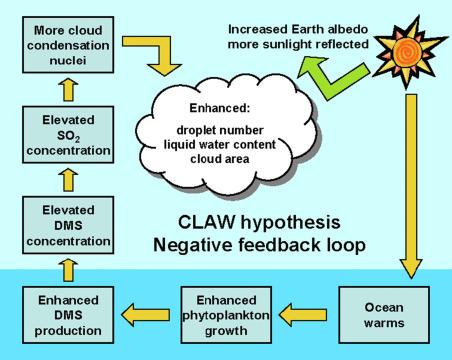
Impact of the Gaia Hypothesis on Environmental Science and Policy
The Gaia Hypothesis, which posits that the Earth functions as a self-regulating system where biological and geological components interact to maintain conditions conducive to life, has significantly influenced the field of environmental science. This integrative perspective has shifted how researchers view ecosystems, emphasizing the interconnectedness of organisms and the environment. By acknowledging the Earth as a living organism, scientists are compelled to consider the broader implications of their research on global health and sustainability. This holistic approach fosters collaboration across different scientific disciplines, leading to innovative methodologies aimed at understanding climate change, biodiversity loss, and ecosystem resilience.
In the realm of policy-making, the Gaia Hypothesis has catalyzed a more ethical approach to environmental governance. Policymakers are increasingly recognizing that regulatory frameworks should not only address immediate ecological issues but also consider the long-term impacts of human activities on Earth’s systems. This recognition has spurred the development of policies that advocate for conservation, sustainable resource use, and climate change mitigation. Notably, the principle of sustainable development emphasizes the importance of preserving natural ecosystems while seeking economic growth, aligning closely with the values inspired by the Gaia Hypothesis.
The educational implications are equally profound, as the Gaia Hypothesis encourages a rethinking of environmental curricula. By integrating concepts of interdependence and system dynamics into educational programs, future generations are better equipped to tackle complex environmental challenges. Schools and universities are increasingly focusing on interdisciplinary studies, fostering critical thinking and problem-solving skills. Programs that highlight the relationship between human actions and ecological consequences promote a deeper understanding of environmental stewardship. This educational shift ensures that students become not just passive learners, but active participants in preserving the health of our planet.
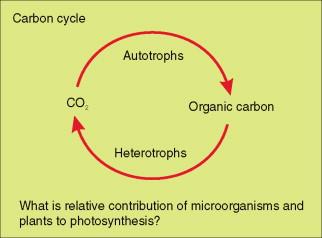
Recommendations for Further Research and Application of Gaia Principles
In light of the ongoing exploration of the Gaia hypothesis, there are numerous opportunities for researchers and practitioners to deepen their understanding and application of Gaia principles across various fields. Future research could focus on integrating systems thinking with ecological studies, yielding insights that emphasize the interconnectivity of living organisms and their environments. Key areas worth investigating include:
- Climate Change Mitigation: Analyzing how Gaia principles can inform strategies for climate resilience and adaptation.
- Biodiversity Conservation: Exploring the implications of Gaia for preserving ecosystems and enhancing species interactions.
- Urban Ecology: Studying urban environments through the lens of Gaia to promote sustainable city planning.
Moreover, the principles derived from the Gaia hypothesis offer valuable frameworks for interdisciplinary applications. Educators and policymakers can leverage these principles to foster a holistic approach to environmental education. Initiatives may include:
- Curriculum Development: Incorporating Gaia principles into educational programs across all levels to cultivate ecological literacy.
- Community Engagement: Encouraging local communities to adopt practices that reflect the interconnectedness emphasized by the Gaia hypothesis.
- Policy Design: Formulating policies that align with ecological balance and sustainable resource management.
An analytical approach to real-world applications of Gaia principles also extends to technology and innovation. Understanding how these concepts can be effectively implemented can lead to advancements in various sectors. Potential avenues for exploration include:
| Sector | Gaia Principle Application |
|---|---|
| Agriculture | Implementing regenerative farming practices that mimic natural ecosystems. |
| Energy | Developing sustainable energy solutions inspired by natural processes. |
| Technology | Creating smart systems that foster ecological balance and resource efficiency. |
Q&A
Q&A: Understanding the Gaia Hypothesis and its Key Dates
Q: What is the Gaia Hypothesis?
A: The Gaia Hypothesis is a scientific theory proposed by British scientist James Lovelock in the 1970s. It suggests that Earth and its biological systems behave as a single, self-regulating entity. The hypothesis posits that living organisms interact with their inorganic surroundings to maintain conditions conducive to life, essentially promoting the idea that life on Earth plays a crucial role in regulating the environment.Q: When was the Gaia Hypothesis first introduced?
A: The Gaia Hypothesis first gained prominence in 1972 when James Lovelock published his work in the book “Gaia: A New Look at Life on Earth.” This publication laid the foundation for discussions and research into how biological and physical processes on Earth are interconnected.Q: Who was involved in the development of the Gaia Hypothesis?
A: While James Lovelock is the primary figure behind the Gaia Hypothesis, he was greatly influenced by the work of other scientists, notably the biologist Lynn Margulis. Margulis’ research into symbiosis and the evolution of life contributed significantly to the underpinnings of the hypothesis and its acceptance in scientific circles.Q: What are some key milestones in the history of the Gaia Hypothesis?
A: Some pivotal milestones in the history of the Gaia Hypothesis include:- 1972: Lovelock’s initial introduction of the hypothesis in his book, garnering both interest and skepticism from the scientific community.
- 1980: The publication of “The Gaia Theory: A New Look at Life on Earth,” which expanded on the ideas in Lovelock’s first book and presented a more detailed framework of the hypothesis.
- 1990s: The hypothesis gained traction in environmental studies, influencing the field of earth system science and conservation.
Q: How has the Gaia Hypothesis impacted modern science?
A: The Gaia Hypothesis has significantly influenced various scientific fields, including ecology, climate science, and Earth system science. It has encouraged a holistic view of Earth’s biological and physical systems and has inspired conservation efforts by emphasizing the interconnectedness of life and the environment.Q: Is the Gaia Hypothesis widely accepted in the scientific community?
A: The Gaia Hypothesis is not universally accepted. While it has garnered support for its insights into ecological interrelationships, some scientists criticize it for lacking empirical data. The debate continues with ongoing research striving to either validate or challenge its principles, creating a rich dialogue in scientific discourse.Q: What are some criticisms of the Gaia Hypothesis?
A: Critics of the Gaia Hypothesis argue that it personifies Earth in a way that implies purpose or intentionality in the workings of nature. Some scientists contend that while ecosystems are interlinked, they do not function as a single, self-regulating organism but rather as numerous independent, competing systems.Q: What is the future of the Gaia Hypothesis?
A: The future of the Gaia Hypothesis may hinge on ongoing research into climate change and ecological resilience. As environmental challenges escalate, the concepts derived from the Gaia Hypothesis could become even more relevant, prompting scientists to investigate how living organisms can contribute to Earth’s sustainability and climate regulation.the Gaia Hypothesis, with its intriguing origins and ongoing debates, continues to inspire inquiry and reflection on our planet’s complex web of life. Whether embraced, scrutinized, or found in-between, it invites us all to consider how intricately life and the environment are intertwined.
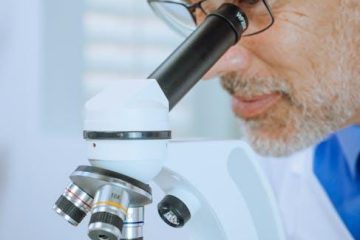
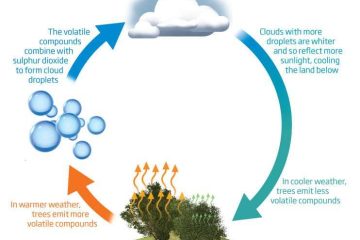

0 Comments